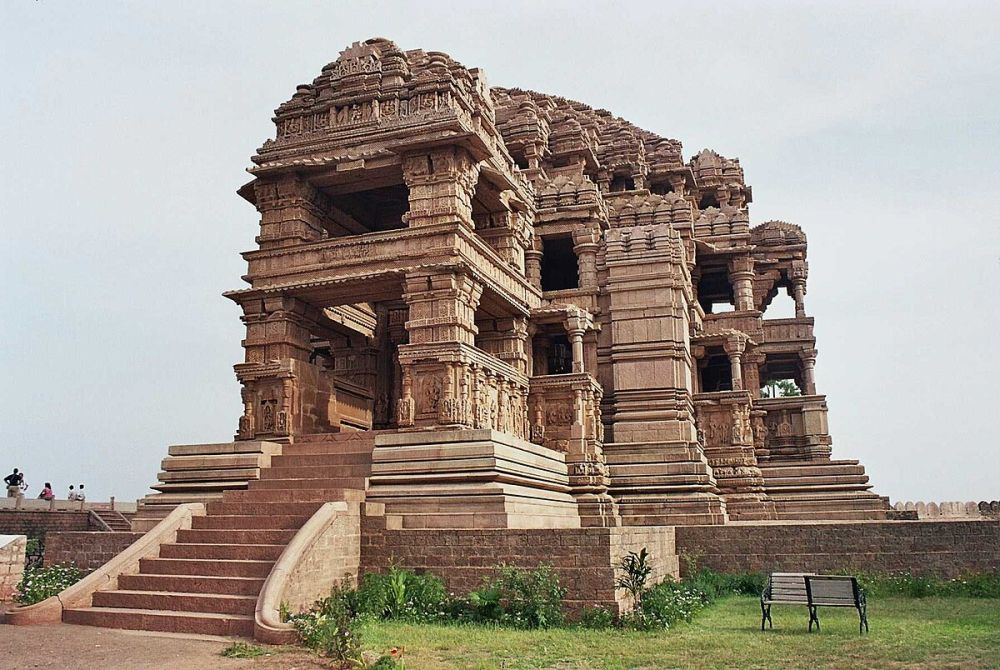

The SasBahu Temple, also known as the Sahastrabahu Temple, is a 11th-century architectural marvel situated in Gwalior, Madhya Pradesh. Its history is as fascinating as its structure, which has drawn the attention of historians and travelers alike. The temple is dedicated to Lord Vishnu and is known for its intricate carvings and impressive craftsmanship.
The temple was built in 1092-1093 by King Mahipala of the Kachchhapaghata dynasty. ‘Sas-Bahu’ translates to ‘Mother-in-law and Daughter-in-law’ respectively. This name is commonly attributed to two adjacent temples of different sizes, the larger of which is called Sas while the smaller is called Bahu. However, this interpretation is a result of a popular folk misnomer whereby 'Sahastra-Bahu' ('One with Thousand Arms', a form of Lord Vishnu) was colloquially shortened to SasBahu.
Over the years, the SasBahu Temple has attracted tourists from every part of the world. The sheer intricacy of the carvings and the historical context of the edifice have made it a prime location for those interested in history, architecture, and culture. With the development of the tourism infrastructure in Gwalior, like better connectivity, guided tours, and increased national and international promotion, the temple has seen a steady rise in visitor numbers.
The temples are admired for their architectural complexity. The larger one is adorned with elaborate carvings depicting various deities and floral patterns indicative of early medieval North Indian temple architectural style. The smaller temple, which complements its larger companion, similarly showcases intense carvings and artistic embellishments. The attention to detail in the sculptures and the overall design is particularly stunning.
Recent trends in tourism in Gwalior, and specifically at the SasBahu Temple, include increased use of technology with virtual tours and augmented reality (AR) experiences allowing remote tourists a taste of the temple’s grandeur. Additionally, there is a growing interest in sustainable tourism, with local agencies emphasizing the preservation of the site and its surroundings to ensure that growth in tourism does not adversely affect the temple's condition.
To experience the SasBahu Temple in its fullest, visitors often pair their trip with the nearby Gwalior Fort, which offers a breathtaking view of the city. Accessibility to the temple is made easier with the presence of local guides and informational boards that enrich the visitor experience with historical facts and stories.
SasBahu Temple stands not just as a religious site but as a beacon of India's rich medieval history and architectural grandeur. Its rising popularity among tourists reflects an increasing appreciation for historical and cultural tourism in India. With the continued efforts in conservation and sustainable tourism, the SasBahu Temple is projected to remain a cherished destination for generations to come.